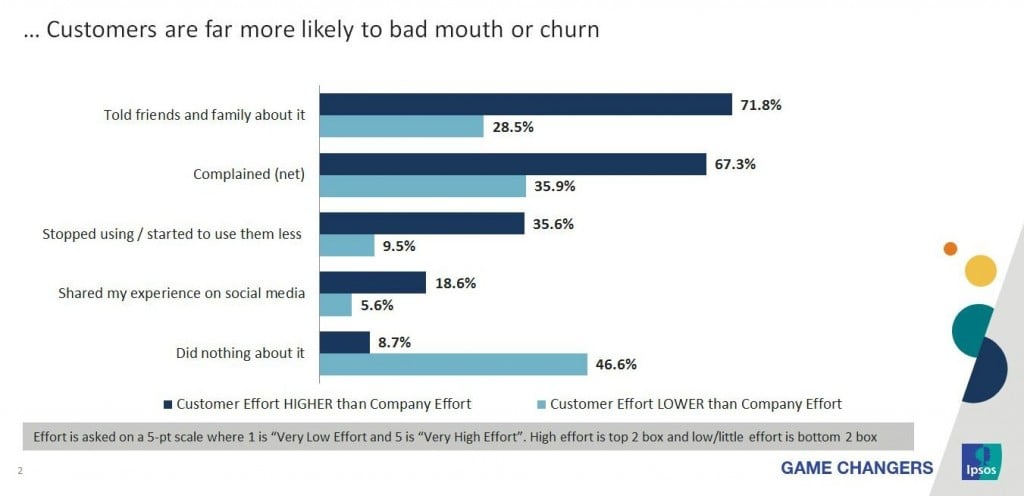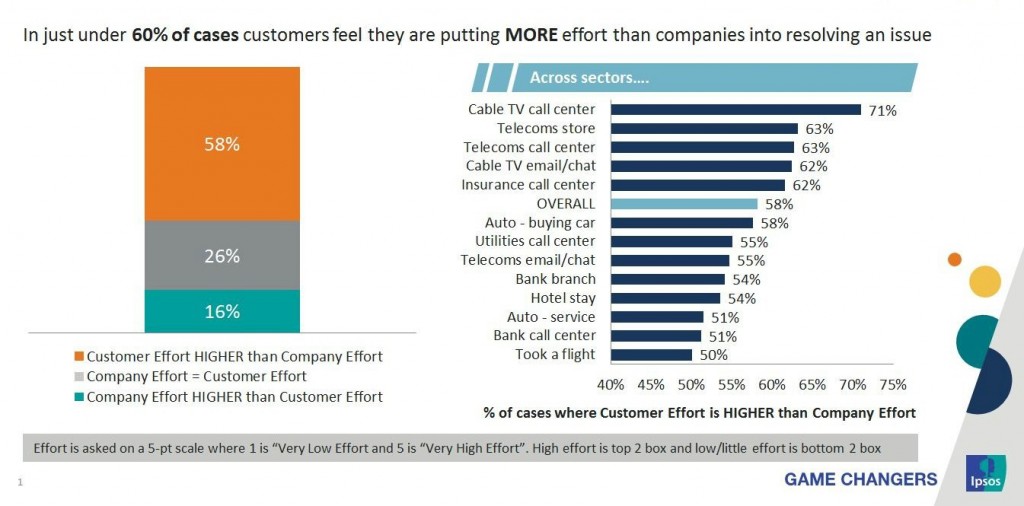If you are a business owner or executive, you know how easily customer complaints can slip through the cracks and become secondary, sometimes even forgotten. Complaints management has been an increasingly hot topic in today’s overly transparent and digitized business world and customers expect service that is fast, effective and pain-free. When complaints go unnoticed or ‘unclosed,’ your customer’s reaction to this event, while seemingly miniscule in the grand scheme of things, chips away at your perfectly shaped brand sculpture, causing outsiders to notice imperfections.
Almost every day, customers are faced with what’s called a ‘critical incident’ or moment of truth where their loyalty to a company is challenged. In that moment, the company either impresses with expert customer service, or, they fall short, disappointing the customer and causing a devastating rift in the customer/company relationship. Today’s smart consumer is equipped with the informative tools necessary to change brands or companies by a mere mobile search or mouse click. Therefore, retaining and honoring customer loyalty has never been more important or more challenging.
Measuring Customer Effort is not Enough
Ipsos Loyalty carried out a survey across seven sectors in the U.S. in order to investigate how companies respond to customer issues or critical incidents. What we found was that 50 percent of customers perceive that companies made little effort to resolve an issue. Furthermore, 65 percent of customers think they had to put in a lot of effort just to get something resolved. All in all, one of the key findings was that measuring customer effort in isolation is not enough. Whilst it does link to customer outcomes, we found that it is the Customer: Company Effort Ratio that is ultimately predictive of customer loyalty.
The Customer: Company Effort Ratio takes both perceived customer and company effort into account in order to predict a customer’s loyalty level. In other words, if you want to know how likely it is your customer is coming back; you need to know how they perceive the effort the company put in to resolving an issue.

The Customer: Company Effort Ratio Matters
The Customer: Company Ratio is three times more predictive of a customer’s propensity to use the company again following a negative critical incident or complaint than the Customer Effort Score. By using the ratio, companies can realize what red flag incidents are creating negative bad mouthing, and strive to reverse it. Make no mistake, when a customer encounters a bad customer service experience, they tell others. In fact, when customers perceive they have put in more effort than companies to resolving an issue, they are:
- Four times more likely to start using the company less or stop using it entirely than if they feel companies have put in more effort than them
- Over three times more likely to share their negative experience on social media
- Two and a half times more likely to tell friends and family about it
- About twice more likely to complain to the company about it.

In about six in ten cases, customers perceived that they had put in more effort than companies to sorting out an issue. This number is grossly high and certainly unacceptable to the smart consumer. Certain industries are worse than others, with 71% of people believing they had put in more effort when faced with an issue from a call center of a cable TV company. Rates of dissatisfaction are commonly high among offenders like cable TV call centers, telecom stores and call centers, and cable TV email/chat:

Optimizing the Customer: Company Effort Ratio
Following a negative critical incident or complaint, companies must intervene to reduce the customer’s annoyance. Recommended interventions can range from soft actions like an apology or a detailed explanation of the situation and ‘next steps’ to hard actions like offering a discount or some form of financial compensation.
Well-timed interventions make a huge difference to a consumer and will reduce the amount of customer effort needed. In most cases, these interventions will increase brand perception and convince customers that companies are taking their issue seriously.
Our data shows that interventions following a customer issue or complaint are a sure way for companies to optimize the Customer: Company Effort Ratio:
- When a company intervened following a negative incident, the Customer: Company Effort Ratio is 1.7 times lower than when a company has done nothing
- This lower ratio score leads to a propensity to use the company in the future which is about 3.8 times higher.
The challenge, however, is for companies to know how to best intervene for maximum Return on Effort. Keeping all customers happy at all times is costly and not realistic. So how should companies prioritize and manage interventions? There are two key principles that companies need to follow to try and optimize the Customer: Company Effort ratio:
- Not all critical incidents are equal. Companies need to discriminate between different types of incidents and prioritize incidents that have a high impact on customers
- There is no “one size fits all” intervention. Different types of incidents need different types of response. Customer profile and transaction history also need to be taken into account.
Key Business Implications
To sum it up, here are the three main implications for businesses looking to manage and improve their response to negative critical incidents:
1. Companies need to start tracking the Customer: Company Effort Ratio as better indicator of potential churn and bad mouthing
2. Companies can improve the ratio by letting their customers know that they are taking their issue seriously and doing their best to resolve it
3. Companies need to understand how to best respond to customer issues to maximize the return on effort and optimize the Customer: Company Effort Ratio.
Nobody goes to an art museum to see a cracked sculpture the same as no customer seeks out a poorly regarded company. With the evolution of the customer voice through mediums like social media, complaints management is a business component all executives need to invest in in order to retain customer loyalty. Respected customers are loyal customers. Disrespect customers move on because, hey, like in an art museum, another sculpture is just around the corner.




While it can be agreed that a) the Customer Effort Score is a limited, and rather weak, indicator of downstream behavior and b) your approach is more predictive, there is a larger issue to be considered with respect to customer complaints and negative incidents. The consideration is that, to restore the relationship and level of trust, the company needs to be aware of the full scope of complaints and incidents. In many cases that simply doesn’t happen, so a more proactive approach is recommended to address this: http://customerthink.com/customer_complaints_learn_the_real_value_of_getting_the_whole_picture/
Hi Michael – many thanks for your comment and the link to the article. Very interesting read. Indeed getting a full understanding of complaints is key and our data suggests that just under 50% of customers who had a negative critical incident went on to complain – so a bit higher than the 2 out of 10 figure that has been quoted for a while. But still this represents a significant amount of customer complaint silence that companies need to address – and your recommendations as to how companies should go about addressing this are convincing.
On the other hand our data shows that it makes business sense to focus on providing resolution to those who complained in priority for several reasons. Compared to non-complainers, complainers are:
-Significantly more likely to have stopped using the company following the incident
-Twice more likely to have shared their bad experiences with friends, family or colleague
-4 times more likely to have shared their negative experience on social media
-Easier to target
So whilst complaints silence is an issue that companies need to address, our data suggest that focusing on complainers in priority to a) intervene to reduce negative outcomes and b) carry out root cause analysis on readily available data to reduce the overall number of complaints makes business sense. Full details:
http://www.ipsos.com/sites/ipsos.com/files/files/HealingthePain_Feb2016.pdf